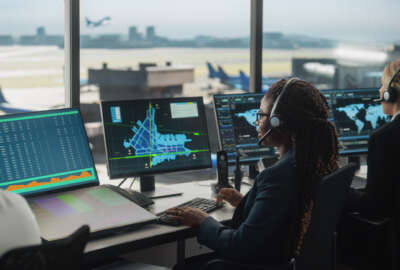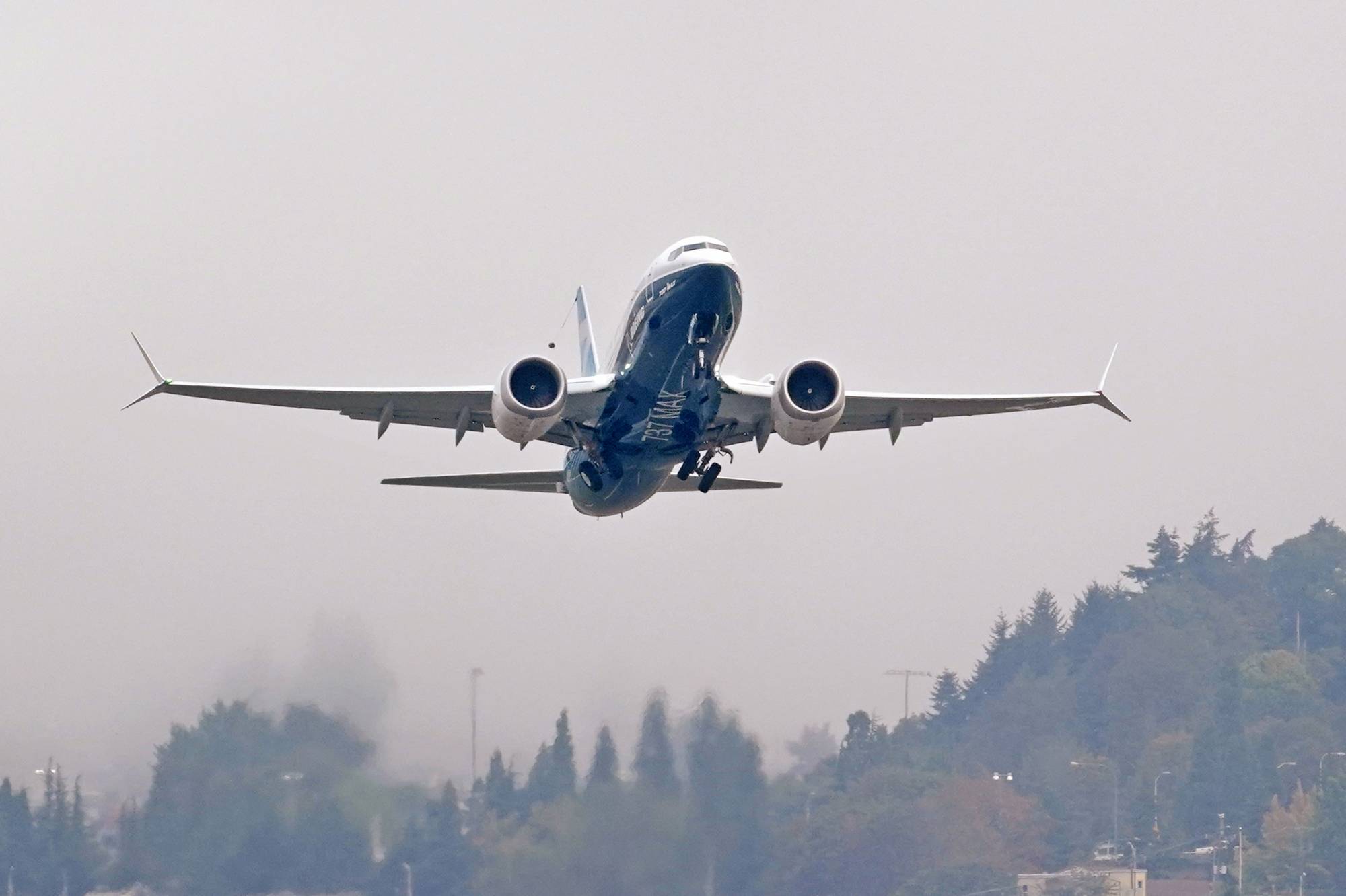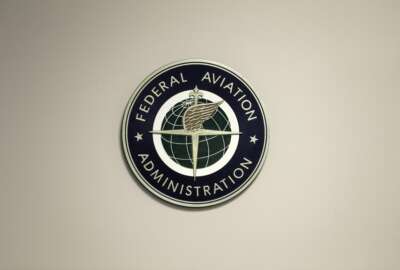A union says the FAA doesn’t use its own people enough
The union that represents FAA employees who deal with aging technology told a Senate committee that the FAA is too slow to develop its technical workforce.
Among its biggest challenges, the FAA has a constant need to install new equipment while keeping the old stuff going. That task falls to members of the Professional Aviation Safety Specialists, or PASS. The union represents FAA employees who deal with aging technology and sometimes a shortage of spare parts. PASS told a Senate committee that the FAA is too slow to develop its technical workforce and is not moving fast enough to stay ahead of aging infrastructure. PASS president Dave Spero joined The Federal Drive with Tom Temin for more.
Interview transcript:
Tom Temin: And what is the basic issue — the fact that the equipment that underpins all of the safety and air traffic control operations is aging and that you don’t have enough people? Is it kind of a both of the above?
Dave Spero: I think you hit the nail right on the head. First of all, out in the field, we’ve got the operations aspect of the FAA. It’s keeping the equipment running, making sure it works, that air traffic controllers can separate aircraft. They can get them up in the air, across the sky and down where they need to be at any given time. We work on radar or automation, navigational aids, visual aids. I like to equate it to, in some of these larger facilities, we’re the engineering section in the Starship Enterprise; we’re downstairs making sure all that stuff works. So there’s not enough of us out there in the operations world right now to make sure there’s enough of us on shift at odd hours of the day when other people are at home sleeping, making sure that all that stuff is working. We’ve got to be trained. We’ve got to be staffed. We’ve got to be in place. And we’re down about 800 technicians around the country. FAA has a plan to fix that. But at the same time, it’s going to it’s going to take time and money to do it. On the other side, that equipment has to constantly be upgraded. And the amount of time it takes across the country to upgrade one particular system, where we may have 400 of them at different airports and facilities around the country, that sometimes can take five to seven years to make happen. And when you’re doing that, that’s the facilities and equipment side of it, making sure that all that’s going, that sort of thing is like changing the tires on a vehicle that’s going 60 miles an hour. It’s not easy to do.
Tom Temin: Right. This is all 24/7 type of equipment. And it sounds like it’s a lot more than, say, putting on a new graphics board in an old PC chassis.
Dave Spero: Absolutely right. You’ve got to integrate these systems into the national airspace system. And so what we’re talking about is asking the agency to start looking at this from another perspective, using those operations folks, staffing them properly, buffering in enough people around the country to be able to install that equipment and at the same time be able to maintain the operations around the country. When we’ve got enough people to do that — and we don’t right now to be able to do all of that — but when we do have enough people to do that, instead of taking seven years to install those 400 systems, we might be able to do it in less than a year.
Tom Temin: Well, do they use contractors at this point to supplement the PASS members?
Dave Spero: Well, they do. And that’s the thing. You’ve got this sort of a serial waterfall that happens and the contractors come out and do some of the installation work. We may have people that come out and escort them, but at the same time, we’ve got operations people that they’re going to have to be in place watching them do that work or assisting them, when in fact we’re probably the best skilled people to be able to do that work, because at the end of the day, we’re going to be responsible for the care and feeding of it until it’s replaced.
Tom Temin: And you testified that you would like the FAA to kind of hurry up to get its personnel plan for this particular function done. What’s going on there? What’s taking them so long and what’s required to get people capable of doing that type of work?
Dave Spero: Well, that’s a good question. As I like to often say, they’re moving at the speed of government and that kind of causes us difficulties, the bureaucracy in place that is thinking about this. And quite honestly, there are some there are some congressional hurdles utilizing some of that money and effort to be able to the staff operations people. There’s some wonkiness that goes with that when it when it comes to the Hill. But at the same time, that’s able to be accomplished within. And what I don’t want to see is them coming up with other sorts of solutions that throw the baby out with the bathwater. And that’s not going to solve the problem either.
Tom Temin: We’re speaking with Dave Spero. He’s president of the Professional Aviation Safety Specialists representing FAA technical employees. And maybe just give us a sense of the extent of the equipment that you do oversee. I think people may not realize how complex that whole infrastructure really is.
Dave Spero: Tom, that’s a great question. Whenever something goes wrong with equipment out there in the national airspace system and there are delays, people say, there’s a problem with the radar? Well, a radar is just one stand-alone piece of equipment. You’ve got different sorts of automation, computer systems that take that information and put it on displays for controllers. We have communications equipment that allow them to speak to the not only aircraft but to each other and to other facilities. You’ve got navigational aids out there that provide signals to the pilots. Those visual aids that provide signals, that provide flashing lights to the pilots and allow them to land on airfields, sometimes without the assistance of an air traffic controller, all of that equipment. And then there are 70,000 systems, 70,000 facilities across the country that our members maintain.
Tom Temin: So a lot of those are not necessarily in the airport, but they’re out somewhere in a field. Or it could be one of those red and white checkered boxes full of stuff.
Dave Spero: Absolutely true. The complexity of that. I like to also say it’s sort of like when you when you pull back that curtain and you see what the Wizard of Oz, all those things that he’s moving back there. That’s sort of what’s going on for us.
Tom Temin: And what does it take for someone to be able to become … I guess there’s a certification for this, I’m presuming. What does it take to get that and how long does it take?
Dave Spero: Yeah, a technician could take anywhere from three to five years to become fully certified, to become a certified professional technician. And typically, they were either a tradesperson or come out of the military having worked on air traffic control equipment. They’ve got that background. They’ve already walked up to the table having that. Now you have to have to go to schools. You have to have on the job training, you have to have the intricacy of knowing where all those wires and all those cables fit together and how all the systems fit together. Or the FAA and the national airspace system. So it can take a little while.
Tom Temin: In other words, it’s as long and as complex as learning the control function itself upstairs.
Dave Spero: Absolutely. And separate and apart. But at the same time, we work hand in glove with each other.
Tom Temin: And what are the top challenges now? Is it simply that the FAA is trying to revamp with new gear, or is it the problems of maintaining stuff that just because of the heat and the time passage wears out or needs to be replaced?
Dave Spero: Yeah, I think part of that is that tech, as technology changes more quickly these days. There’s always another type of technology on the forefront. When a particular system has finally been implemented and out in the field, it’s ready to be replaced. And so we have to be able to be skilled, our technicians, our certified professional technicians in the field have to be skilled in some of the legacy systems, maintaining them, and the new technologies that are coming in, even if they’re cloud based systems. We still have to have those skill levels and those abilities. And as the agency transfers its technologies, some of those obsolete systems and we’ll call them obsolete, they’re not tubes or anything. But the fact of the matter is contractors are getting to the point where they’re not going to continue to support something that’s 20 years old. They want to move on to the next technology. That’s how companies make money. And at the same time, it costs the FAA more and more money to be able to buy spare parts for some of these systems along the way. So it’s in everyone’s interest to have a process that allows these technologies to be upgraded in a much shorter period of time.
Tom Temin: And your members also work outside of the wiring closets and racks themselves. You deal with the airlines to some extent because their equipment interacts with FAA equipment and you get pretty far afield from the basement of the tower, so to speak.
Dave Spero: Yeah, absolutely. Everyone thinks that everything’s in an air traffic control tower, and it is. We’ve got facilities around the country, terminal radar approach controls, like in DFW and in Atlanta and New York and in those places are complex. But at the same time, you’ve got stand-alone air traffic control facilities in Tulsa, Oklahoma, or in Kansas City or Wichita, where fact of the matter is, our folks come in to work in the morning and they get in a government vehicle and out they go to drive out there and fix some of this equipment. So all of that is important to the national airspace system. Even in some cases, small airports like ours in Tulsa, Oklahoma, or even in McAllister, Oklahoma, places where all of that stuff is important to someone.
Tom Temin: Sure. And in your statement to Congress, you said the biggest challenge is a lack of vision on behalf of the agency, the FAA. What did you mean by that?
Dave Spero: So there’s this vision that I’m talking about, about having our technical workforce in the field begin to shift the way we talk. We think about the implementation of technologies, utilizing people in 400 airports and terminal radar port controls and air traffic control centers around the country. Having enough of us there to be able to take on these new technologies and say, ‘Sure, we can install this.’ I was talking to some folks a couple of weeks ago. There’s a system that is very vital, the enterprise information display system, it’s called, and it’s very vital to the air traffic controllers. They want to upgrade it. We’ve got some of them out there, they go back into the 90s. And once they get this thing ready to go which they should be sometime next year, it’s going to take them probably five more years to install it. And I talked to our folks and they said, look, if we had enough people and we had the training in advance, these 400 of these things that we’re going to put out there, we could probably get them done in less than a year without any trouble. And that’s the vision that they lack, to be able to look at that sort of thing and say, this is because once you start to pick those things off the table now, you don’t have to concentrate on it for five years. You can work on something else and so on and so forth.
Copyright © 2025 Federal News Network. All rights reserved. This website is not intended for users located within the European Economic Area.
Tom Temin is host of the Federal Drive and has been providing insight on federal technology and management issues for more than 30 years.
Follow @tteminWFED






